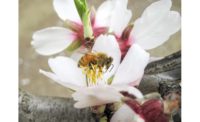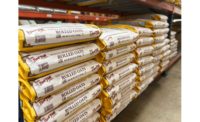Snack Food & Wholesale Bakery was recently able to talk to Guilherme Maia Silva, founder, Força Foods, on its energy bars and trail mixes' water footprint, and about sustainability in the snack industry.
Liz Parker: How did Guilherme Maia Silva get the idea for the watermelon seed energy bites?
Guilherme Maia Silva: The idea has its roots early on in my days at UC Davis. Towards the end of my sophomore year, I took an Organic Crop Production class where we explored the water footprints of various crops, especially those grown in California. That’s when I was first introduced to the reality of how certain crops require exercise amounts of irrigated water to survive and produce. These water intensive crops, such as almonds, turn out to be leading ingredients in many snacks, especially plant-based snacks. To make matters worse, California is the world’s largest almond producer, even after years of drought and water scarcity plaguing the state.
It wasn’t until I graduated and began working in the food manufacturing industry that the knowledge I gained at UC Davis paired with his desire to create a snack that helped customers save water. I wanted to make a sustainable vegan snack that everyone could enjoy guilt-free. That’s when I stumbled upon the hidden gem of watermelon seeds. It turns out that not only do these seeds have a low water footprint, but they also have amazing nutritional value, packing more protein per serving than almonds. It was then when I began experimenting with recipes, combining other organic and natural ingredients to make the allergy-friendly and gluten-free energy bites we have today!
LP: How does water footprint work, and why do watermelon seeds have such a low footprint?
GMS: Water footprint is composed of three components: green water, blue water, and grey water footprint. These three add up to measure the amount of water needed and used to produce a specific good. Green water footprint is the water from rainfall, blue water footprint is the water directly sourced from water reservoirs (both surface and groundwater), and grey water is measured by the amount of water that is required to dilute pollution and bring the water to meet safe quality standards.
Watermelon seeds have a low water footprint, especially when compared to ingredients such as almonds, pistachios, peanuts, and dairy, because of their low blue and grey water footprint. Let’s take an almond for example: its blue and grey water footprint is 78 times higher than that of a watermelon seed. The amount of freshwater water needed for direct irrigation is dramatically lower, which means watermelon seeds do not deplete our already suffering natural water reservoirs at the stunning rate that almond production does.
LP: How has the snack been performing sales-wise during the pandemic?
GMS: Força Foods launched when the pandemic was already in full effect, so Força only knows life as a company operating during a pandemic. The snacks have been performing well and hitting its stride within the Bay Area and they are constantly expanding into other exciting regions of the United States.
LP: Any new products on the horizon?
GMS: Força has some exciting new products in the works that will introduce novelty to the market. Our aim is to provide our customers with the healthiest, tastiest, and most sustainable products possible and we believe our future projects will do just that. All from the power of this incredible superfood, watermelon seeds.
We plan on releasing new flavors for our Energy Bites line in 2022 and are excited to introduce new delicious and natural ingredients to the lineup.





